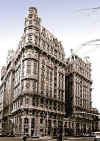 |
New York
Architecture Images-Upper West Side The Ansonia |
|
architect |
Graves and Duboy |
|
location |
2109 Broadway |
|
date |
1899-1904 |
|
style |
Beaux-Arts |
|
construction |
Stone and brick on steel frame. |
|
type |
Hotel and Apartment Building |
|
images |
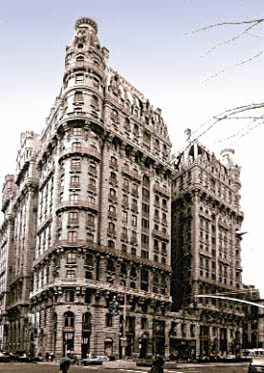 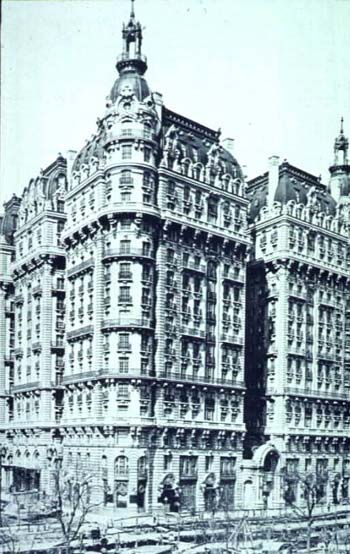 |
|
|
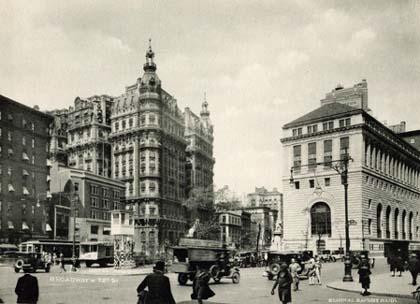 |
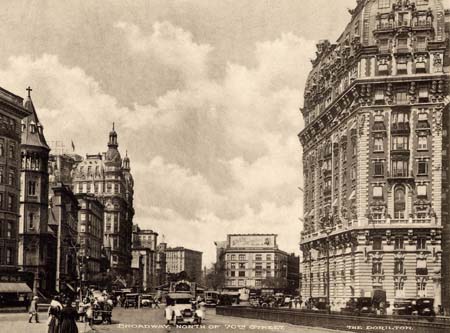 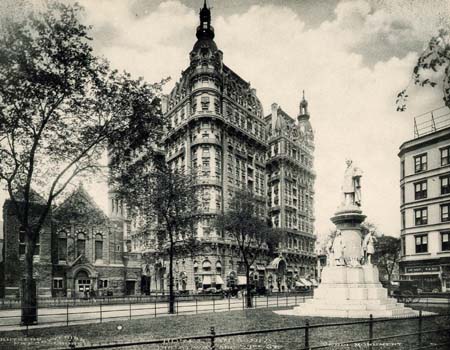 |
|
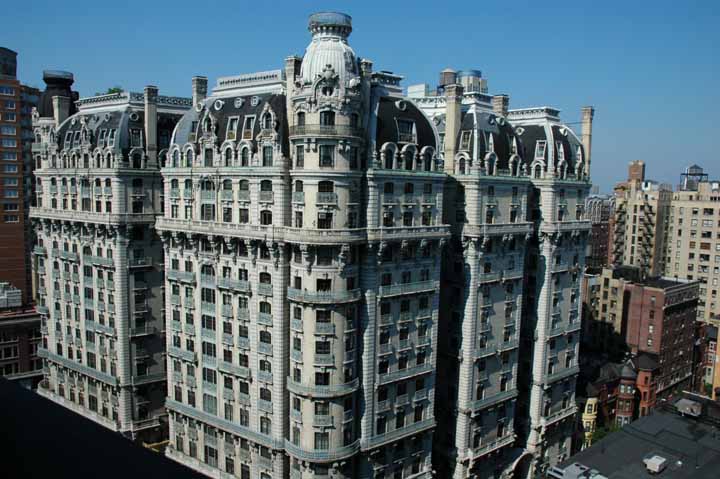 |
|
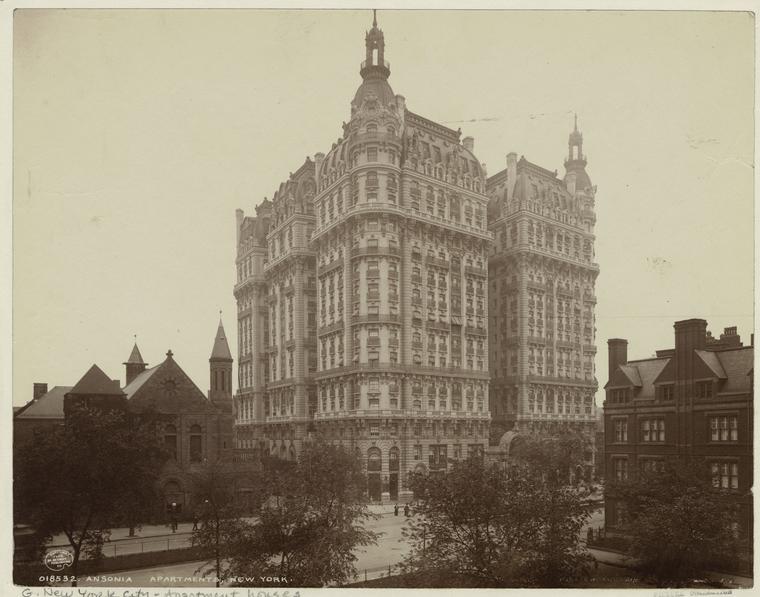 |
|
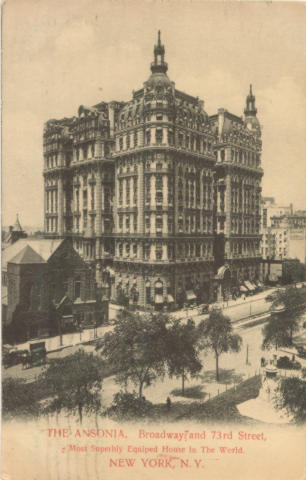 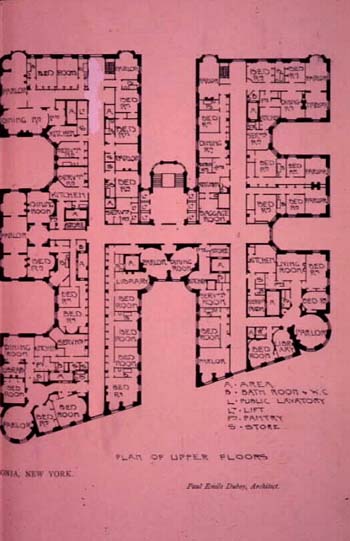 |
|
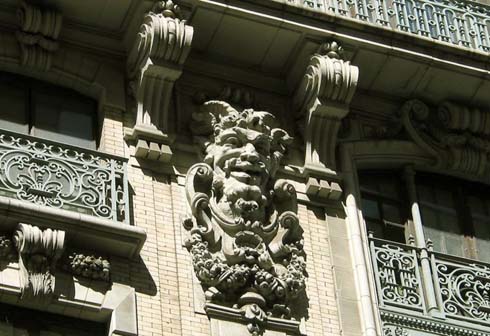 |
|
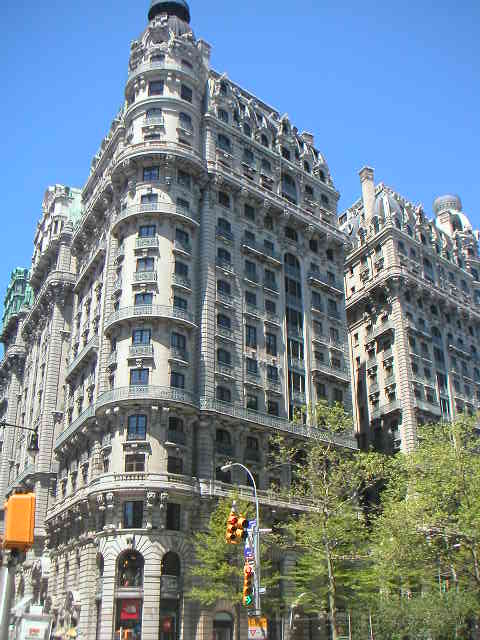 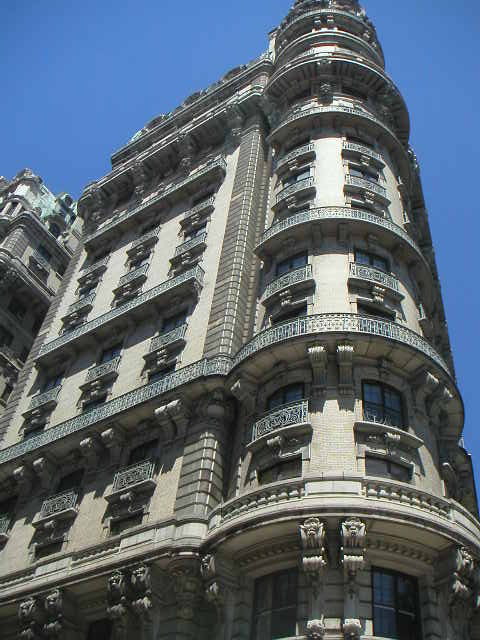 |
|
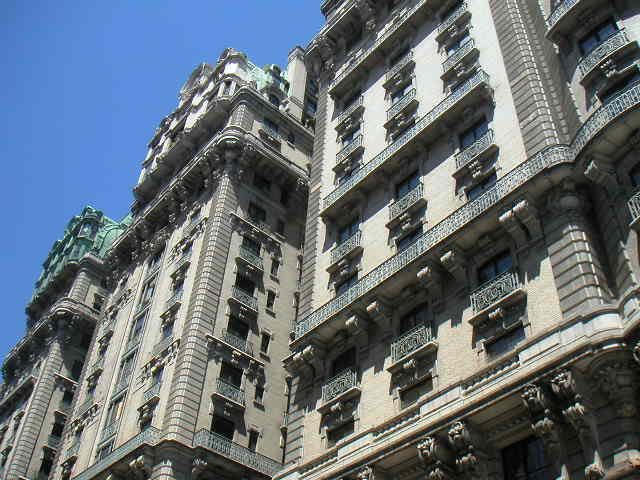 |
|
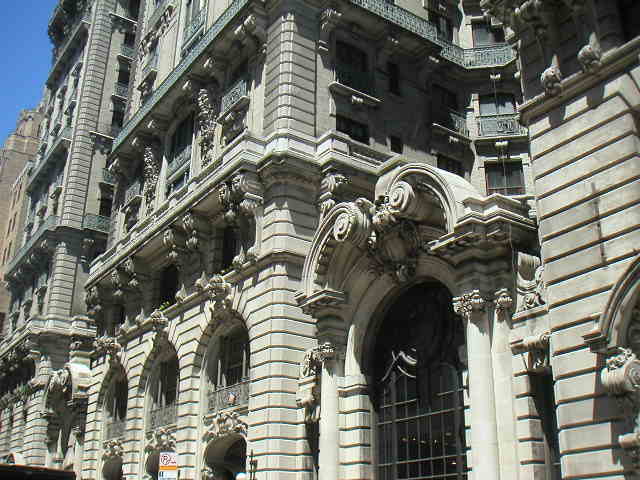 |
|
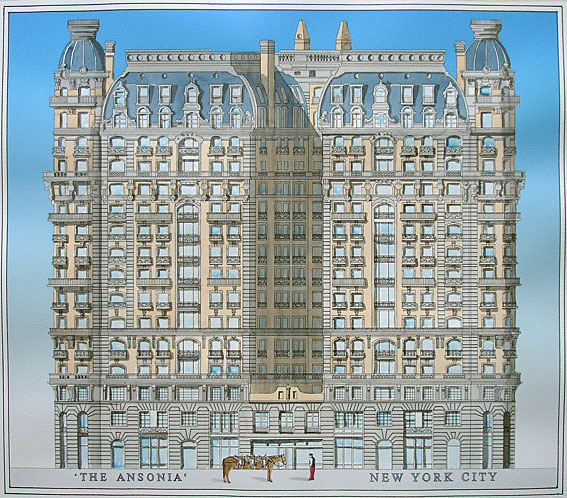 |
|
| Rendering copyright Simon Fieldhouse. Click here for a Simon Fieldhouse gallery. | |
|
Named after Anson Green Phelps, the industrialist and grandfather of the building's developer, this exuberant Beaux Arts hotel and apartment building was inspired by French hotels. However, at eighteen stories it is much taller than its 6-story models. The largest and grandest of the New York apartment-hotels, it functioned as a place where one could live temporarily, but in grand style. In addition to the ample apartments, the Ansonia featured a grand ballroom, several cafes, tea rooms, writing rooms, a lobby fountain with live seals, a palm court, a Turkish bath and the world's largest indoor swimming pool. These amenities enticed many famous cultural personalities to take up residence in the building. The Ansonia's enormous bulk is somewhat reduced by its complex massing and its intricate ornamentation. Light courts break up the monumental facade and allow the maximum amount of light and air to penetrate the interior. The Ansonia is typical of the standard of
luxury applied to turn of the century apartment buildings on Manhattan's
Upper West Side. |
|
|
BABE RUTH and Arturo Toscanini called it home. Plato's Retreat and the Continental Baths, where a young Bette Midler sang, moved in decades later. But the Ansonia, the Beaux-Arts wedding cake of an apartment hotel at Broadway and 73rd Street, eventually became as notable for its contentiousness as for its celebrities. In just one of the Ansonia's lively chapters, the building was threatened with demolition in the 1970's; only after considerable efforts by residents was it saved. One organization that supported these efforts was the Municipal Art Society, which is now presenting an exhibition called "At the Ansonia Hotel: A Broadway Landmark Turns 100.'' The show contains 30 photographs by Tom Wolff, many of which depict current residents and are accompanied by interviews. The show opens Friday at the Urban Center Galleries, 457 Madison Avenue at 51st Street, and runs through Aug. 16. In the words of Cristina Del Sesto, who curated the show and did the interviews, the building is "the most litigious in New York'' but also a place where "the walls don't speak, they sing.'' "It's impossible to say whether the Ansonia should be more famous for its architecture or its ethos,'' she added. And as Kent Barwick, president of the Municipal Art Society, put it, had the Ansonia been razed, "our city would have suffered far more than the loss of a Beaux-Arts masterpiece.'' I think the Ansonia also hosted the gay Continental Baths in its basement (where Bette Midler famously started her singing career). It later became the straight/swinger Plato's Retreat and was finally closed by the city in response to the AIDS crisis. |
|
|
links |
|